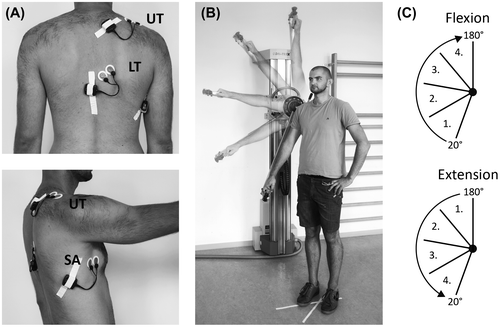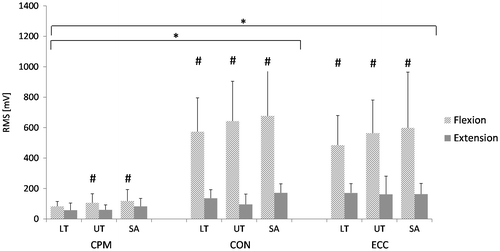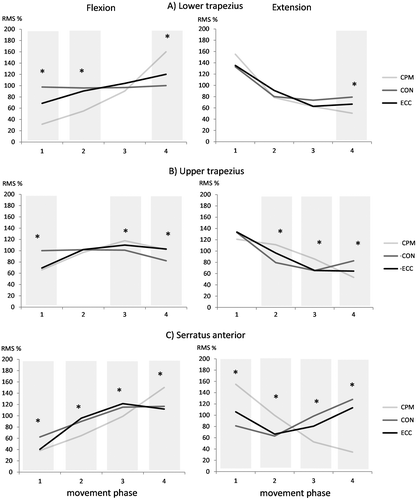Figures & data
Figure 1. (A) EMG set-up: positioning of surface electrodes (UT = upper trapezius, LT = lower trapezius, serratus anterior). (B) Positioning of subject at dynamometer with defined ROM of 160° shoulder flexion in scapula plane. (C) Movement phases of shoulder flexion and extension.

Table 1. Peak torque values (mean ± SD, Nm) of shoulder flexion and extension during isokinetic testing conditions (CPM, CON, and ECC).
Figure 2. Absolute EMG amplitudes of the whole ROM for scapular muscles during isokinetic conditions of shoulder flexion and extension. Muscles: LT: Lower trapezius, UT: Upper trapezius, SA: Serratus anterior; Isokinetic testing conditions: CPM: continuous passive motion, CON: concentric at 60°/s, ECC: eccentric at 60°/s. ‘*’ indicates statistical significant differences (p < 0.017) in muscle activity during the loading conditions (CPM vs. CON, CPM vs. ECC). ‘#’ indicates statistical significant differences (p < 0.017) in muscle activity between shoulder flexion and extension.

Table 2. Normalized EMG activity of scapular muscles (mean ± SD) of movement phases (1–4) during shoulder flexion and extension of different isokinetic testing conditions (CPM, CON, and ECC).
Figure 3. (A–C): Normalized scapular EMG activity over the course (1–4 phase) of shoulder flexion and extension of isokinetic testing conditions. CPM: continuous passive motion, CON: concentric at 60°/s, ECC: eccentric at 60°/s; Asterisk (*) indicates significant differences between isokinetic conditions (paired t-test, p = 0.013).

